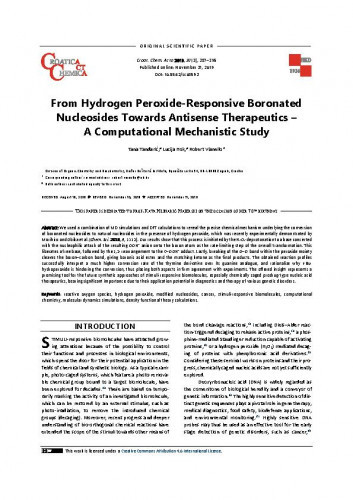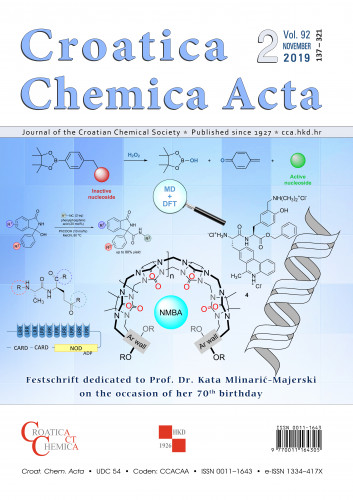We used a combination of MD simulations and DFT calculations to reveal the precise chemical mechanism underlying the conversion of boronated nucleosides to natural nucleosides in the presence of hydrogen peroxide, which was recently experimentally demonstrated by Morihiro and Obika et al. (Chem. Sci. 2018, 9, 1112). Our results show that this process is initiated by the H2O2 deprotonation to a base concerted with the nucleophilic attack of the resulting OOH– anion onto the boron atom as the rate-limiting step of the overall transformation. This liberates a free base, followed by the 1,2-rearrangement to the C–OOH– adduct. Lastly, breaking of the O–O bond within the peroxide moiety cleaves the boron–carbon bond, giving boronic acid ester and the matching ketone as the final products. The obtained reaction profiles successfully interpret a much higher conversion rate of the thymine derivative over its guanine analogue, and rationalize why t-Bu-hydroperoxide is hindering the conversion, thus placing both aspects in firm agreement with experiments. The offered insight represents a promising tool for the future synthetic approaches of stimuli-responsive biomolecules, especially chemically caged prodrug-type nucleic acid therapeutics, bearing significant importance due to their application potential in diagnostics and therapy of various genetic disorders.
Sažetak

 Croatica chemica acta : 92,2(2019) / editor-in-chief Olga Kronja.
Croatica chemica acta : 92,2(2019) / editor-in-chief Olga Kronja.